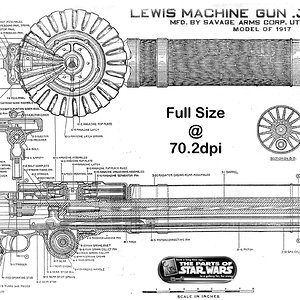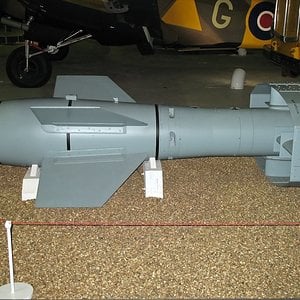Navigation
Install the app
How to install the app on iOS
Follow along with the video below to see how to install our site as a web app on your home screen.
Note: This feature may not be available in some browsers.
More options
You are using an out of date browser. It may not display this or other websites correctly.
You should upgrade or use an alternative browser.
You should upgrade or use an alternative browser.
This package-type rocket is a self-contained unit fired from a metal or wood crate. Firing is accomplished by “pointing” the crate at the target, resting the front part of the crate on a mound of dirt (or a similar rest) at an angle from 5° to 45°, and firing by means of a hand electrical firing system.
The propellant charge, contained in the motor tube, is in the form of one stick weighing 14 lb., 9 oz. with one central hole and eight annular holes.
Eight grooves are formed in the sides of the propellant stick, and celluloid tubes are fitted into these grooves. A length of quickmatch in the central hole is inclosed in a celluloid tube.
There are two igniters, one at the front and one at the rear of the propellant. The rear igniter consists of a cloth bag containing 10 grams (154 grains) of NC powder. The front igniter is a metal holder containing a flash composition with a layer of initiating composition.
The bursting charge is contained in the large section, directly forward of the rocket motor tube.
The booster, known as Zdlg. 36, consists of a cylindrical aluminum container filled with penthrite wax and perforated at the top to house a thimble-shaped detonator.
The fuze, Wgr. Z. 50, is a point-detonating or graze action type. The safety pin is removed before firing, leaving the two centrifugal bolts and a split ring to act as a safety feature in flight. The detonator is situated in the inertia pellet.
There are 26 jets at the end of the motor tube inclined approximately 12° right, giving it rotation in flight for stability. The internal diameter of the jets is 0.5 cm (.19 in.) and the external diameter 1 cm (.38 in.).
SPECIFICATIONS
Weight (total) 181 lb.
Length (overall) 3 ft., 11 ins.
Length (body) 2 ft., 4 1/2 ins.
Length (tail) 1.85 ft.
Diameter (body) 11 ins.
Diameter (tail) .59 in.
Number of ports 26
Contents 110 lb. TNT
Range (maximum) at 42° 2,337 yds. (estimated)
The propellant charge, contained in the motor tube, is in the form of one stick weighing 14 lb., 9 oz. with one central hole and eight annular holes.
Eight grooves are formed in the sides of the propellant stick, and celluloid tubes are fitted into these grooves. A length of quickmatch in the central hole is inclosed in a celluloid tube.
There are two igniters, one at the front and one at the rear of the propellant. The rear igniter consists of a cloth bag containing 10 grams (154 grains) of NC powder. The front igniter is a metal holder containing a flash composition with a layer of initiating composition.
The bursting charge is contained in the large section, directly forward of the rocket motor tube.
The booster, known as Zdlg. 36, consists of a cylindrical aluminum container filled with penthrite wax and perforated at the top to house a thimble-shaped detonator.
The fuze, Wgr. Z. 50, is a point-detonating or graze action type. The safety pin is removed before firing, leaving the two centrifugal bolts and a split ring to act as a safety feature in flight. The detonator is situated in the inertia pellet.
There are 26 jets at the end of the motor tube inclined approximately 12° right, giving it rotation in flight for stability. The internal diameter of the jets is 0.5 cm (.19 in.) and the external diameter 1 cm (.38 in.).
SPECIFICATIONS
Weight (total) 181 lb.
Length (overall) 3 ft., 11 ins.
Length (body) 2 ft., 4 1/2 ins.
Length (tail) 1.85 ft.
Diameter (body) 11 ins.
Diameter (tail) .59 in.
Number of ports 26
Contents 110 lb. TNT
Range (maximum) at 42° 2,337 yds. (estimated)








